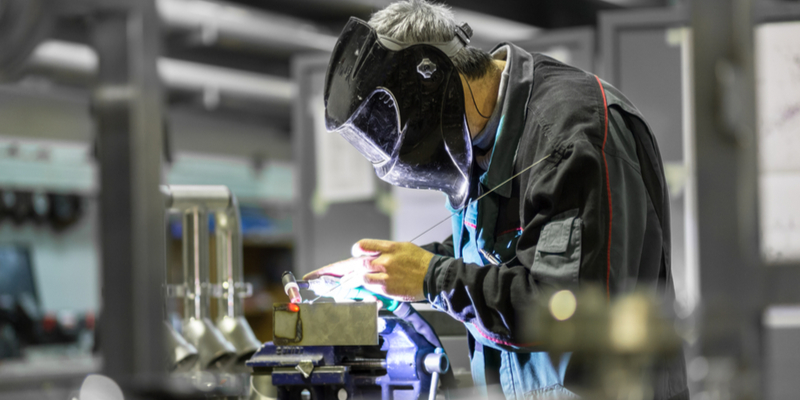If you are familiar with lean manufacturing, you’ll almost certainly have heard of poka-yoke. Most books and guides you’ll read on lean manufacturing principles will include a section on poka-yoke. There are also over 2 billion search results for poka-yoke on Google alone, explaining the concept in-depth.
It’s safe to say that there’s a wealth of information out there on what it is and the tools associated with it. But factories often don't understand why they need poka-yoke, and how to implement poka-yoke properly.
What Does Poka-Yoke Mean in Manufacturing?
The simple definition of poka-yoke is error-proofing or inadvertent mistake-proofing. Essentially, a poka-yoke is any method in any process that makes errors unlikely or impossible.
The specific method you use in your situation will depend on many factors. Within each system, you’ll need to look at:
- The risk of error;
- The cost of implementing your error-proofing method;
- How effective the method is.
I often fear that organizations will see an article about poka-yoke or visit a factory that implements it, and simply copy what they have seen. This is a mistake for almost any tool, but it has a bigger impact here.
Poka-Yoke in Manufacturing: Where it Can Go Wrong
Poka-Yoke is an idea designed to minimize or eliminate mistakes made in work done. Yet this simple concept is almost always lost in many organizations.
Many tend to see the mistakes as someone’s fault — whether it be the supplier, subordinate, designer, etc. To implement poka-yoke correctly, we need to look internally to see the errors and failures in our operations, rather than others' processes. Only then, will we begin to understand the concept of poka-yoke in manufacturing.
Once we start to perfect our processes, we can begin to understand and look at using poka-yoke correctly.
How Should I Implement Poka-Yoke?
Instead of repeating the exact method you read about or saw at another factory, you should focus on what you are trying to accomplish and why you want to achieve it. Ask yourself questions like:
- How expensive is the thing you are making?
- What is the risk to the safety of the associates manufacturing the product?
- What is the safety risk to the end user?
For example, if the risk is relatively low, then you’ll likely not need to employ a very sophisticated poka-yoke device. For example, if you're manufacturing drinking straws, as the relative cost of one straw is quite low, and the users’ risk is minimal to none, it's unlikely that you would adopt a complicated or expensive approach.
Let’s take a poka-yoke example in electronics manufacturing – we once suggested a simple idea of using better manufacturing gloves at a Shanghai factory. When we proposed the idea, the management laughed at us. As an experiment, the management authorized the purchase of those gloves, which were triple the cost of the usual gloves. To no surprise, the defects went away in less than one day - without the need for a large investment to buy robots.
However, let’s take a more complex example, where eliminating errors becomes more critical and complicated.
Real Life Poka-Yoke Example

Previously, I worked at a company that manufactured flatbed trailers. A critical step during production is the attachment and welding of the axles to the trailer — it was crucial that no welds were ever missed.
Our problem was that in a low-volume operation, it wasn’t feasible to invest in an automatic detection system because of the high cost. Instead, we came up with the following method that was practical, although not fail-safe:
- The welder that did the first welding pass was required to mark the weld with a paint pencil immediately after finishing.
- The next welder will then use a different colored paint pencil to mark both the existing welds, as well as their own.
- Finally, a supervisor would then mark each weld with a third color.
This way, it would be impossible to mark the weld if the weld was not there. The only way to miss the weld would be to fail either the weld or inspection purposely. Additionally, the following welder and supervisor would have to make the same mistake. So for this particular operation, we made it difficult to process it wrong.
Key Learnings From Poka-Yoke
Not every situation can be like ours. You may find that your situation calls for more high-tech operations — such as automated visual systems and process design that make it impossible to orient a part the wrong way.
Other examples might include limit switches to make sure a part has been inserted correctly. The list of examples would be almost endless. But all-in-all, the tech level does not matter; just the solution.
The most important takeaway is that we must treat every mistake in our operation as a failure of systems and not of our people. Every error that occurs is a result of a process that was designed in such a way that this mistake could happen.
Mistake-proofing and lean problem-solving can be achieved with poka-yoke. As long as we continue to think in terms of who is to blame, instead of how the process failed — we will not be creative enough to generate the solutions we need. So, make sure you’re focused on perfecting processes since it is impossible to perfect our people.
Are you looking to implement Poka-Yoke in your factory?
Check out some examples of how it was implemented to improve quality in our complimentary eBook below:




